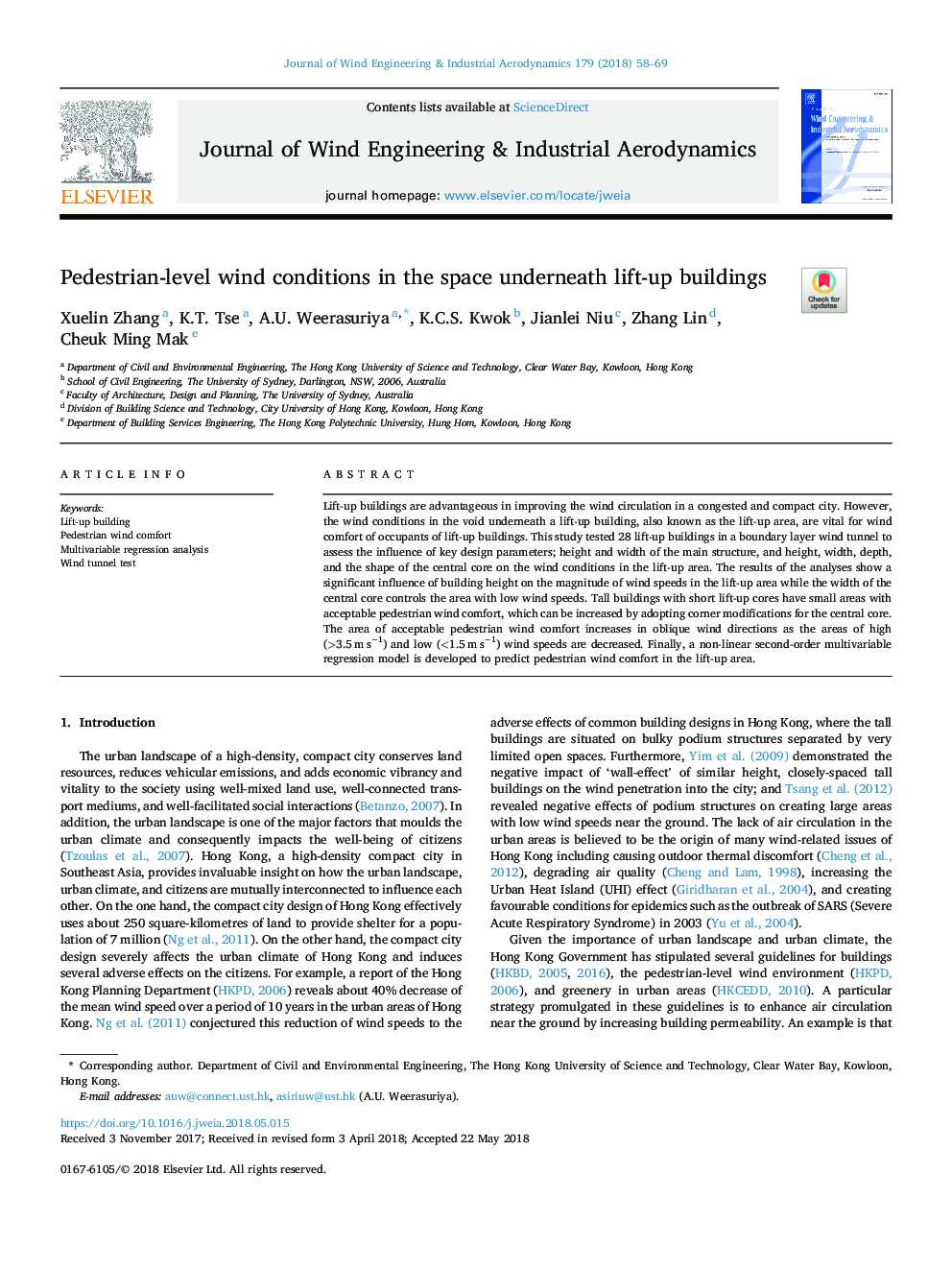| Article ID | Journal | Published Year | Pages | File Type |
|---|---|---|---|---|
| 6756807 | Journal of Wind Engineering and Industrial Aerodynamics | 2018 | 12 Pages |
Abstract
Lift-up buildings are advantageous in improving the wind circulation in a congested and compact city. However, the wind conditions in the void underneath a lift-up building, also known as the lift-up area, are vital for wind comfort of occupants of lift-up buildings. This study tested 28 lift-up buildings in a boundary layer wind tunnel to assess the influence of key design parameters; height and width of the main structure, and height, width, depth, and the shape of the central core on the wind conditions in the lift-up area. The results of the analyses show a significant influence of building height on the magnitude of wind speeds in the lift-up area while the width of the central core controls the area with low wind speeds. Tall buildings with short lift-up cores have small areas with acceptable pedestrian wind comfort, which can be increased by adopting corner modifications for the central core. The area of acceptable pedestrian wind comfort increases in oblique wind directions as the areas of high (>3.5â¯mâ¯sâ1) and low (<1.5â¯mâ¯sâ1) wind speeds are decreased. Finally, a non-linear second-order multivariable regression model is developed to predict pedestrian wind comfort in the lift-up area.
Related Topics
Physical Sciences and Engineering
Energy
Renewable Energy, Sustainability and the Environment
Authors
Xuelin Zhang, K.T. Tse, A.U. Weerasuriya, K.C.S. Kwok, Jianlei Niu, Zhang Lin, Cheuk Ming Mak,
